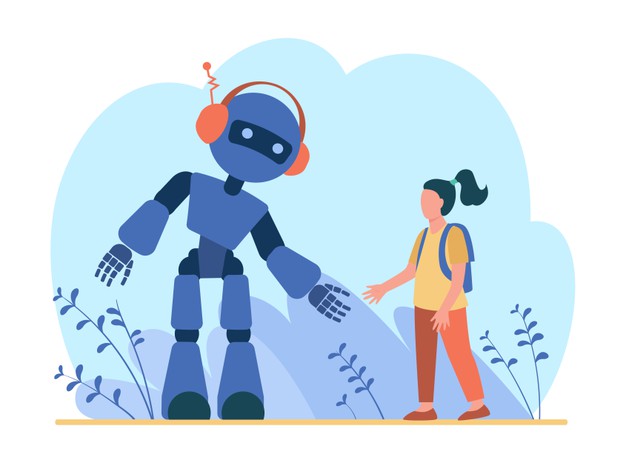5 AI Trends That Are Making 2021 a Smarter Year
Artificial Intelligence (AI), the science of giving intelligence to machines, isn’t new any longer. Though AI’s widespread popularity in the business world has been happening for a decade, it was present as a concept for more than a century and has been a research subject since the 1950s.
Gone are the days when AI tends to be associated with robots. It is present in almost everything that we use today: from home appliances and mode of conveyance to personal gadgets and office gears.
According to Gartner’s 2019 CIO Agenda survey, between 2018 and 2019, organizations that have deployed AI grew from 4% to 14%. Thanks to the global success of digital assistants like Amazon Alexa, Google Assistant, and other intelligent apps, AI occupies the top of corporate agendas.
AI trends keep changing every year, fixing a benchmark for the following year. The year 2021 is a prospective AI year and an AI-dominating decade. COVID-19 outbreak is not halting the AI momentum. We can see that many startups and enterprises are rolling out AI-powered inventions to lend a helping hand to the current crisis.
Let’s have a quick peek into what’s happening in the AI space now.
1. Predictive Analytics to gain improved traction
Predictive analytics is the practice of transforming data into future insights. It extracts information from existing data to understand historical and current situations. This is done to define patterns and predict future outcomes and trends through a combination of statistical algorithms and/or machine learning (ML) techniques.
Marketing, financial, insurance sectors are using predictive analytics very efficiently. The process of credit scoring is a great example. Financial services firms decide the credit viability of a person by studying data on credit history, prior loan applications, repayment patterns, and other customer data.
Predictive analytics helps businesses stay ahead of the competition as it helps:
• Retailers to forecast expected sales growth from past data; make necessary inventory requirements; create optimum shipping schedules; configure store layouts to maximize sales, and offer personalized in-store experiences.
• Airlines to predict bookings based on the travel data and data of local, national, and international scheduled and unscheduled events.
• The hospitality industry to forecast occupancy levels on any night in order to maximize revenue.
• Marketing professionals to optimize marketing campaigns to generate new customer engagements.
The year 2021 will witness predictive analytics being used increasingly for measuring future economic situations, risk areas, weather movements, infrastructure maintenance, and investment prerequisites. Businesses and enterprises will be eager to generate predictive insights to anticipate problems and fix them before collapses and expensive remedies.
2. AI will do more with less data
AI learns and analyses patterns and trends in the Big Data collected by IoT and sensors. It then automates tasks and delivers business benefits.
The use of huge amounts of citizens’ data has been a necessity for AI to perform well. But the next decade will see the emergence of less data-hungry AI systems that use data synthesis methodologies
Rana el Kaliouby, the pioneer of artificial emotional intelligence (Emotion AI) and the co-founder and CEO of Affectiva says, “We’ll see a rise of data synthesis methodologies to combat data challenges in AI”, as reported by TNW. Kaliouby says that these methodologies will help enterprises to take data that has already been collected and synthesize it to create new data.
AI systems driven by bottom-up big data have trouble managing ‘edge’ cases. Whereas data synthesizing and efficient robot reasoning can facilitate top-down systems that don’t demand huge piles of data to reach intelligent deductions. These systems could be more flexible and naturally intelligent.
3. The intersection of AI and Cybersecurity
Privacy and security are always hot topics. Businesses can’t afford to lose the trust of their customers over any security breach. They cannot violate people’s faith in technology as they depend on it to crack many of their problems. Enterprises need to ensure security while moving aggressively towards innovation and growth.
It is true that AI is a boon and bane to the cybersecurity industry. It’s a boon when it acts as a solution for cybersecurity professionals. But a bane when it could possibly become weapons in the hands of dark hands.

The year 2021 is predicted to be a year of AI trustability; a year where cybersecurity is driven by AI and machine learning (ML) models to facilitate quick detection of cyber threats.
Through relentless data analysis and extensive number crunching, AI, and ML systems can efficiently bring out the most relevant data points and anomalies to the attention of the analysts.
AI-based anti-virus systems, ML-based detection algorithms for network analysis, ML & AI-based algorithms to detect phishing emails, etc. will be used at a high rate. Improved algorithms based on statistical inference, big data analysis, deep learning, etc. will reduce the need for humans to extract false positives from true. This will help businesses to move without data threats and keep anomalies at bay.
4. Business process automation to reach new heights
Advanced robotics and artificial intelligence bring to our mind the wonderstruck images of robots walking around grasping and doing several jobs with tremendous speed and efficiency that were previously done by humans.
This excitement is tied up with the fear of losing jobs. But as per a study by the international consulting firm PwC on the potential long-term impact of automation, AI and robotics will be disruptive for labor markets. It would cause a remarkable alteration to the nature of jobs, but will not displace humans entirely. Many new jobs will also be created and the long term net effect should be positive for the economy as a whole. PwC forecasts a contribution of more than $15 trillion by AI and automation to the global GDP by 2021leading to a huge demand for more jobs.
Intelligent automation along with improved adoption of Robotic Process Automation (RPA) will help businesses to have faster actions and decisions, unprecedented levels of efficiency and quality, lower costs, greater innovation, agility, and scale. In short, the future is more colorful as it fetches incredible levels of productivity, freedom from dreary and repetitive tasks, and improved quality of life.
5. Closer collaboration between humans and AI
The year 2021 will begin a stronger era of collaborative intelligence. AI-powered technologies will largely augment human capabilities rather than replacing them. Business efficiency can greatly increase as AI can perform faster and more efficiently than humans. With the help of ML, AI can analyze data from various sources without any errors which tend to occur when humans manually do it.
Further, AI has the ability to present data in comprehensive layouts to enable identification of trends, opportunities, and risks. Humans can effectively come to the picture with their intelligent decision-making capabilities. By analyzing reliable and error-free data humans can derive crucial insights that place their business on top gear.
In the book ‘Human + Machine: Reimagining Work in the Age of AI’, Paul Daugherty, the chief technology and innovation officer for Accenture; and James Wilson, managing director of information technology and business research at Accenture Research, makes a convincing case for coupling AI with human capital.

The innate skills of humans such as leadership, teamwork, imagination, and social skills can be greatly supplemented by the speed, scalability, and computing skills of machines. The future is a hybrid one powered by the collaborative intelligence of man and machine.
Final Thoughts
The year 2021 will be an AI-powered experience as businesses will increasingly use Artificial Intelligence to transform customer and employee experiences. It is important to plan ahead to emerge your organization as an AI-powered one in the post-crisis world.
Having a proper policy in place to incorporate AI in your organizational process is essential in the new decade. Besides creating vast socio-economic opportunities, AI is also causing ethical and socio-economic challenges. The need of the hour is a well-thought-out set of principles to guide policymakers.


